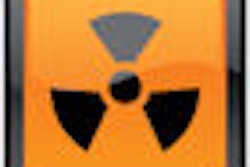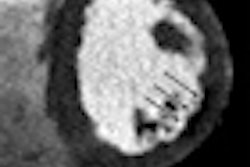Researchers from a Tennessee children's hospital have found that thallium-based bone nuclear imaging studies can raise the risk of cancer incidence in pediatric patients, according to an article in the January issue of the American Journal of Roentgenology.
Images from thallium bone scintigraphy more accurately show how an osteosarcoma tumor is responding to chemotherapy, compared to images from routine bone scintigraphy. But radiologists at St. Jude Children's Research Hospital in Memphis, TN, stopped using thallium to monitor therapeutic osteosarcoma protocols in December 2003, due to their concern about the increased risk of cancer incidence from the radiation dose exposure to children.
The hospital's concerns were well founded. St. Jude researchers conducted a retrospective study of the medical records of all patients to estimate the potential excess lifetime cancer incidence and mortality associated with thallium-201 (Tl-201) bone imaging exams performed from August 1991 through November 2003. Their findings were published in the January issue of the American Journal of Roentgenology (2010, Vol. 194:1, pp. 245-249).
The multidisciplinary research team determined that excess cancer incidence could be as high as 13.0 per 100 patients and excess cancer mortality as high as 5.0 per 100 patients, both with respect to girls ages 5 and younger. Estimated incidence differed dramatically by age and sex.
Osteosarcoma affects 2.7% of children diagnosed with cancer in the U.S., according to 2008 American Cancer Society (ACS) statistics. With aggressive surgery and multiagent chemotherapy, approximately 70% of children with localized disease survive. Histologic response to neoadjuvant chemotherapy performed prior to surgery is a strong predictor of patient outcome.
The patient cohort evaluated by lead author Dr. Sue Kaste of St. Jude's department of radiological sciences included 32 males (8.1 to 20.1 years) and 41 females (6.0 to 20.7 years). Patients had three Tl-201 studies with a median dose of 4.4 mCi (range, 2.2-8.4 mCi) per study. The median total cumulative dose for boys was 18.6 rem or 186 mSv (range, 8.4-44.2 rem) and 21.5 rem or 215 mSv (range, 7.0-43.8 rem) for girls.
The researchers calculated estimated cancer incidence and mortality by sex and age of the cumulative Tl-201 studies. Estimated cancer incidence and mortality were approximately twice as great in girls compared with boys, and the values increased the younger the child was at the time of the exams.
The estimated excess cancer incidence for 5-year-old boys was 6.0 per 100 patients, compared with an excess incidence of 2.0 per 100 if exposed at 15 years. For 5-year-old girls, the incidence was 13.0 per 100 patients, compared with 3.1 at 15 years.
For 5-year-olds, estimated excess cancer mortality was 3.0 per 100 for boys and 5.2 per 100 for girls, compared with 1.0 per 100 for boys and 1.4 per 100 for girls exposed at 15 years of age.
Further reduction of doses in younger patients is needed to consider Tl-201 a viable option for imaging osteosarcoma, the researchers recommended.
By Cynthia E. Keen
AuntMinnie.com staff writer
February 11, 2010
Related Reading
Second cancer risk in childhood cancer survivors increased lifelong, June 9, 2009
FDG-PET helps predict osteosarcoma survival, March 12, 2009
Children with malignant bone tumors need long-term follow up, December 3, 2008
Childhood cancer survivors have increased risk of developing new malignancies, December 31, 2007
Childhood cancer survivors at increased sarcoma risk, March 5, 2007
Copyright © 2010 AuntMinnie.com




















